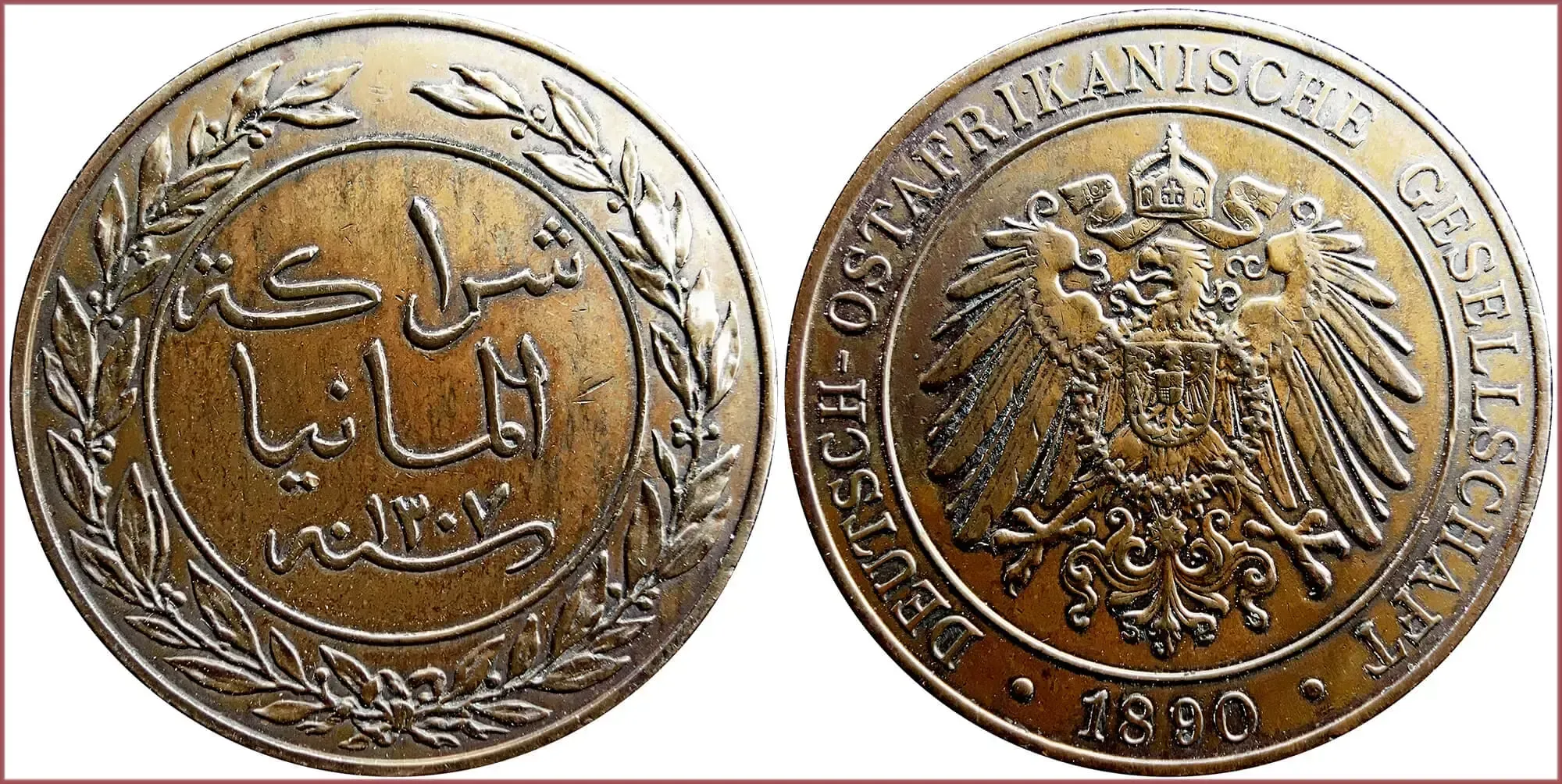PESA: COIN OF GERMAN EAST AFRICA
1 pesa, 1890: German East Africa
Ruler: Wilhelm II — the last German Emperor and King of Prussia from 1888 until 1918, which marked the end of the German Empire.
Date on coin: AH 1307 (AH: Latin "Anno Hegirae" — "the year of the Hijra"; Islamic calendar) = 1890 (Gregorian calendar).
شراكة المانيا: Germany Partnership.
سنه - ١٣٠٧: year 1307.
DEUTSCH OSTAFRIKANISCHE GESELLSCHAFT: German East Africa Company (colonial organization which was originated in 1884 with the aim of trading in Africa; in 1885 the company leased the coastal strip opposite Zanzibar for 50 years but its led to a general revolt along the coast of what is now Tanzania and it had to request the assistance of the German government; in 1891 company was sold out to the German government).
Small or "lesser" coat of arms of the German Empire, 1889-1918.
Berlin Mint (Staatliche Münze Berlin).
Mintage: 1.000.000.
- Copper: 25 mm - 6.47 g
- Reference price: 20$
COIN PESA — WHERE & WHEN (coins catalog: by names & emitents)
- GERMAN EAST AFRICA (1890-1892): pesa = 1/64 rupie
PESA as coin name.
Pesa — historical coin of German East Africa ("Deutsch-Ostafrika" — German possessions on the territory of modern Burundi, Rwanda and Tanzania) at the end of the 19th century.
Pesa was 1/64th of the local rupie — similar to the British Indian rupee, which consisted of 64 pice and was widely used in the mentioned lands.
It was produced in 1890, 1891 and 1892. There is only coin of this denomination — a copper 1 pesa. The total three-year circulation of the pesa, which, by the way, was minted in Berlin, is more than 40 million pieces. In 1904, German East Africa switched to a decimal monetary system — from that time the rupie was divided into 100 heller.
The name of the pesa coin is apparently borrowed from India. After all, it was the Indian rupee (its small changeable coin — pice), before the introduction of its own currency by German East Africa, that performed the role of money there alongside Maria Theresa thaler.
Also, in addition to pice (literally — money, cash) and pesa, the following related exchange coins were in circulation in the neighboring territories: baisa, poisha, pysa, bese...

